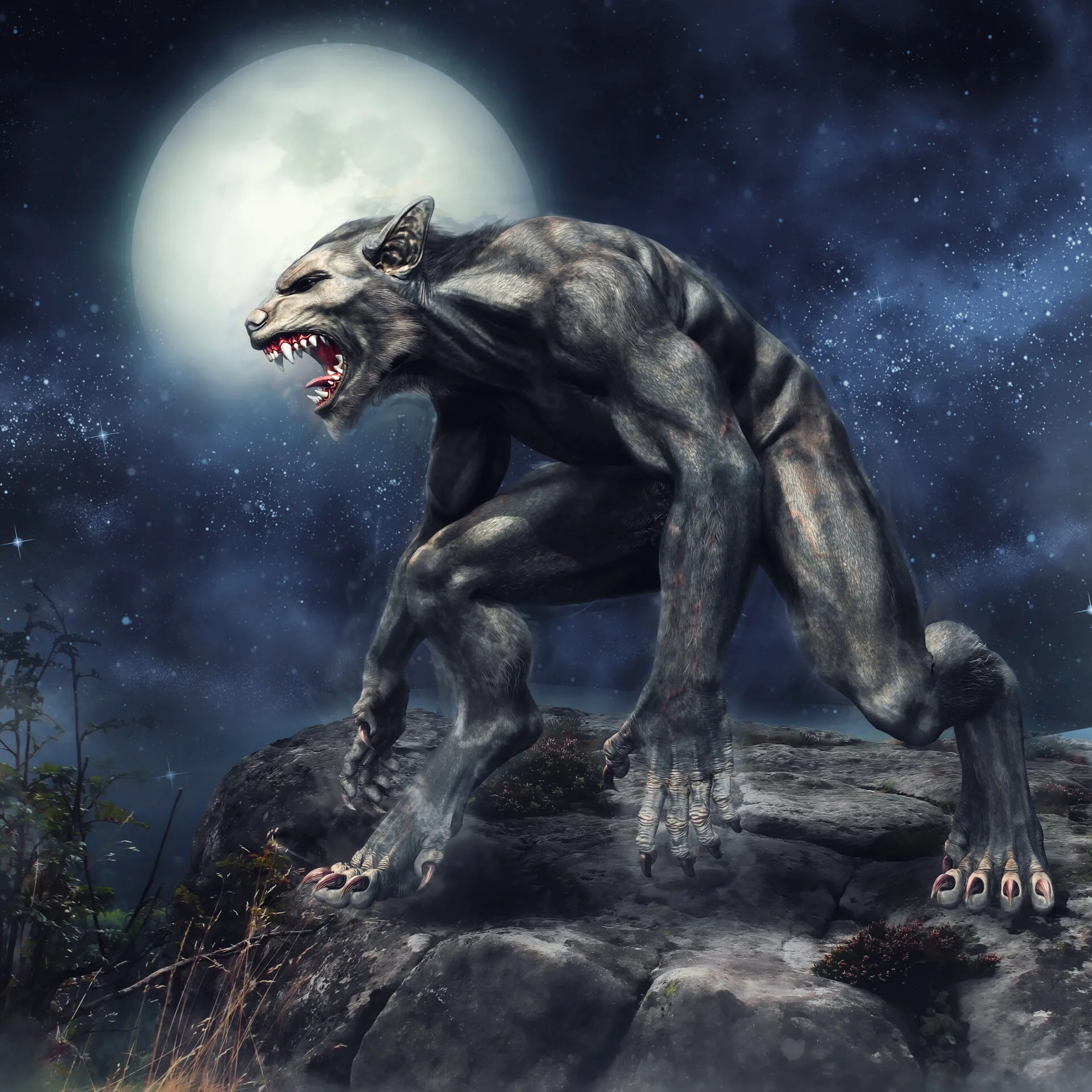by Maria Haskins
Where there are humans telling stories, there are monsters. From the very beginning, monsters have taken center stage in our myths, fairytales, and fiction.
The vampire is one of the classic monsters, and its origins go deep. Monsters drinking blood are found all over the world in different cultures through the ages, from Mesopotamia and Egypt, to Asia, the Americas, and Europe where the monster-lore inspired what was to become horror classics like Bram Stoker’s Dracula and Joseph Sheridan Le Fanu’s Carmilla.
Vampires have been shaped and reshaped again and again in fiction, and right now, this classic monster is seeing another creative resurgence. At the movies, there’s the success of Ryan Coogler’s hot-as-blazes blockbuster Sinners. In books, there’s Stephen Graham Jones’s blood-soaked and thoroughly enthralling revenge-tale The Buffalo Hunter Hunter which puts a bold, transformative spin on vampire lore.
Other books that feature new takes on vampires include Blood on Her Tongue by Johanna van Veen, set in the Netherlands in 1887, and Hungerstone by Kat Dunn, described as a “compulsive feminist reworking of Carmilla”.
Vampires abound in short fiction, too. There’s the utterly compelling “A Stranger Knocks” by Tananarive Due, set in Washington, DC in 1926; and “The V*mpire” by P H Lee, which is an excellent take on such seemingly disparate things as vampires and Tumblr fandoms. In “The Smell of Night in the Basement” by Wendy N. Wagner, the vampires are stripped of the wealth and glamour they often enjoy in fiction, but their allure (and cruelty) remain terrifyingly potent. N. Romaine White’s “D.E.I. (Death, Eternity, and Inclusion)” is a bloody, sharp, and darkly funny take on the vampire mythos, while “Things Lost Forever” by Auston Habershaw is a moving fantasy tale where a craftsman in the city of L’Ombre must survive a most dangerous commission from a local vampire lord. “Shallow Fangs” by David Marino offers a contemporary twist on the genre with a vampire entrepreneur who can drain more than your blood: “… you’ll have to give me permission to come in and take. Take what? Whatever you can imagine, love.”
For more vampire reading tips, check out Alex Brown’s list of 5 Underrated Books About Black Vampires at Reactor, and hey, if you want to experience that old-school vampire tale, Bram Stoker’s Dracula, in a new way, you can get it delivered to your inbox. Dracula Daily is an emailed newsletter that went viral a few years ago, sending you “the novel Dracula, in ‘real-time’, as it happens to the characters.”
After leading with vampires, it’s only right that I shine the spotlight on another classic monster next, namely the beastly, shapeshifting counterpart to the vampires, the werewolves. (I’ll confess my bias upfront: if you ask me to pick a favorite monster, werewolves are going to be at the top of my list every time.)
The idea of lycanthropy, of people turning into wolves, has been deeply ingrained in European, and Indo-European, folklore and mythology for thousands of years. There’s the Greek myth of Lycaon, turned into a wolf by Zeus, and belief in werewolves was widespread in both Viking-age Scandinavia, and medieval Europe. Later, werewolves and vampires became important monsters in Gothic fiction. The werewolves took center stage in books like The Wolf Leader by Alexandre Dumas, Hugues-le-Loup by Erckmann-Chatrian, and The Were-Wolf by Clemence Housman where a femme fatale changes into wolf-form in order to devour her victims.
Guy Endor’s novel The Werewolf of Paris, published in 1933 and set in 1870s France had a tremendous influence on the genre and mythos, as did several movies that followed in its wake, including The Wolf Man and Werewolf of London.
One of the most celebrated and influential werewolf stories is perhaps The Company of Wolves by Angela Carter, originally published as a short story in her 1979 collection, The Bloody Chamber (which also contains several other wolfish tales). The way Carter ties together (sexy) werewolves and Little Red Riding Hood has made a significant mark on werewolf in both movies and fiction.
Two of my favorite werewolf novels from recent times are The Devourers by Indrapramit Das and Mongrels by Stephen Graham Jones. The books are very different in style and content—Das’s book is a sprawling saga that spans centuries and continents, while Mongrels is a coming-of-age tale set in a poor, rundown corner of the American South—but together, they are a powerful one-two punch of werewolf fiction that showcases the breadth and depth of the genre.
My recommended werewolf short fiction reads, apart from Carter’s previously mentioned short stories from The Bloody Chamber, includes “The Last Time Gladys Howled at the Moon” by Jennifer Hudak, a wonderfully toothy tale of aging and transformation; and “Our Heartstrings Howl the Moon” by Eleanna Castroianni where a pack of children turned wolves in order to survive tell their stories: “When we are kids, says Stavros, we eat the heart of a wolf and become half-wolves ourselves.” In the darkly interesting “Emmory and the Wolf” by Lowry Poletti, a woman who was once a wolf has built a home with a partner and children, though something still lurks beneath the surface. Wolfishness vs. domestication is also featured in December Cuccaro’s painfully incisive “How the Wolf Domesticated Herself”, while in “Over Moonlit Clouds” by Coda Audeguy-Pegon we find out what happens when you put a werewolf on a plane.
It’s certainly no secret that monsters can be sexy and seductive. This goes for both vampires and werewolves, as well as many other kinds of monsters. If you’re craving stories about monster hookups, I highly recommend Lee Mandelo’s slow-burning, shapeshifting historical fiction/horror tale The Woods All Black where small town bigotry, the experience of being trans and queer in 1920s Appalachia, and a hungry (hot) monster play important parts. Another great read is “The Monster Fucker Club” by A.V. Greene, where the problematic nature of hooking up with murderous monsters is explored. This story touches on a central concept in all monster lore: that there’s a human angle to every monster and every monster story. As the narrator of “The Monster Fucker Club” muses: “Did everyone have a monster and just hid it better than we could?”
Like werewolves (and Stoker’s vampires), many monsters are shapeshifters or skin- changers. This theme, of a monster that can change its shape and, maybe, has no proper shape or form of its own, is brilliantly and intimately explored in the short story “She Sheds Her Skin” by Raven Jakubowski. A shapeshifter of a different kind is at the heart of John Wiswell’s multi-award nominated novel Someone You Can Build a Nest In where the monster, Shesheshen, “resides as an amorphous lump at the bottom of a ruined manor” before she, unexpectedly to herself, falls in love.
Since I grew up in Sweden, it won’t surprise anyone that one of my favorite classic monsters is the troll. Trolls have haunted Scandinavian folklore through the ages, and while they’re not super common in horror these days, one standout example of trollish horror is The Changeling by Victor LaValle. For trolls in recent short fiction, there is the evocative and unsettling “Border” by John Ajvide Lindqvist (available in the anthology Let The Old Dreams Die), and I also adore Derrick Boden’s “Trolls of 34th Street” in Trollbreath Magazine: “Twelve vagabond trolls lurk in the 34th Street Underpass, just shy of the sun’s fiery demarcation.”
Mothman is another classic monster that doesn’t always get taken seriously (for shame!), but in the truly delightful “Be Not Afraid” by Michael Ford (the story was first published in the anthology We Mostly Come Out at Night) we find out a lot about both Mothman and his backstory with the narrator’s Mamaw.
In “Suddenly My House Became a Tree of Sores” by Gemma Files, a moth-winged woman is a harbinger of dark tidings: “Every move of her shedding dust, tiny scales, reflective, musty. A scent like the very end of brush-fire, ash and ruin, a salted ground.”
Watery monsters abound in books and movies, with racist old Lovecraft being famously terrified by tentacled sea creatures as well as cosmic horrors. In the movies, we have monster classics like The Creature from the Black Lagoon and more recently The Shape of Water. In books, two recent titles in this horror genre are They Bloom at Night by Trang Thanh Tran where a town in Louisiana has been overtaken by a strange red algae bloom, and the Gothic-infused horror/fantasy All the Murmuring Bones by Angela Slatter which explores the dark fate of mer-people.
For short fiction about watery monsters, there is the gorgeously crafted “The Njogel” by Rob Costello, and “Siren” by the same author where danger lurks in a YMCA pool. There might or might not be a real monster in Ana Hurtado’s “Pezcara“, but there is certainly transformation, and in “How to Raise a Kraken in Your Bathtub” by P. Djèlí Clark, the dangers of trying to keep a monster in your home become readily apparent.
Another classic monster type is the monster created by science. Mary Shelley’s Frankenstein is an early and glorious example, but this idea of stitching together body parts and giving them life, or at least something that mimics life, haunts the tales of robots and androids.
A modern take on this genre is Frankenstein in Baghdad by Iraqi writer Ahmed Saadawi where a junk-dealer in post-invasion Iraq stitches together the body parts of bomb victims. When his creature is animated by a lost soul, strange events, and gruesome murders, follow in its wake. Some excellent short fiction takes on the Frankenstein theme are “Bobbie and Her Father” by Gillian Daniels and “The Scientist Does Not Look Back” by Kristen Koopman.
Monsters can come in a multitude of shapes. In “An Incomplete Record of Letters Bearing Teeth Marks” by Mina Bisouki and Philip Alexandris, the monster is a gaping Mouth that manifests in post-revolutionary, 19th century Hungary. Sunwoo Jeong’s “The Lexicon of Lethe” is haunted by a mysterious monster that steals words, and in “What We Don’t Know About Angels”, Kristina Ten explores polydactyly, cancer, and the monstrous aspects of the American healthcare system as well as angels.
There’s a reason why monsters are legion in lore and literature and why they’ve been with us since humans first started telling stories: they are a lot of fun, and they’re a powerful storytelling tool. In the fantasy novel The Last Phi Hunter by Salinee Goldenberg, the monster/demon/ghost hunter Ex encounters a multitude of creatures and monsters with their roots in Thai mythology and folklore; while in the phantasmagoric novel The West Passage by Jared Pechaček, the mysterious Guardian of the West Passage is fated to confront the mysterious beast that lurks below the decaying, grandiose city-sized palace. In both these books, as in most monster stories, the confrontation between human and monster is thrilling but also profoundly transformational because, quite simply, telling stories about monsters is one of the best ways to tell stories about ourselves. To quote writer C. Robert Cargill (author of the monster-haunted Dreams and Shadows series): “Monsters are very real. But they’re not just creatures….there is not a monster dreamt that hasn’t walked once within the soul of a man.”

